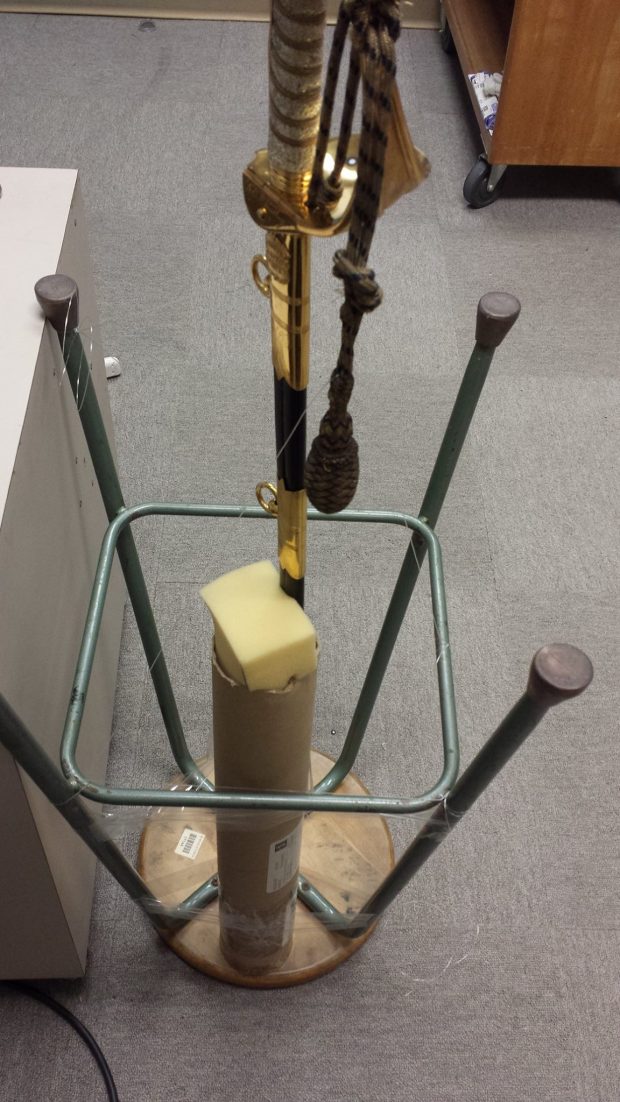After completing the initial project for which we acquired the 3D scanning equipment, our department asked Special Collections for a few items they’d like to see scanned. The first items we received were significantly more challenging than anyone anticipated.
I was tasked with scanning a ceremonial naval sword. It’s a beautiful piece — here’s a photo of it in full:

Scanning it in 3D posed several critical challenges:
- Parts of it are very shiny and parts of it are very dark. Each of these poses different problems with image capture in the scanner, but to have them side by side it made it nearly impossible to properly calibrate the scanner exposure.
- It is narrow and smooth. Trying to capture the slim edges of the item from any angle was extremely difficult. When I was able to stitch the two sides together there were significant blobby gaps along the edges of the sheath. I did not attempt the blade which I cannot imagine being easier.
- It had moving parts. Because the sword needed to be scanned in various pieces then stitched together, it was crucial to be able to match the angles on the tassel and the rings which would have at been attached to a strap when the sword was worn.

After posting part of my dilemma on social media, a friend suggested securing the moving parts with fishing line.

I thought this was a great idea because the fishing line was both too fine and too reflective to show up on the 3D image. I managed to set it up in a way that held everything in place using items we had on hand including foam, a map tube (cut to length) and a lab stool turned upside-down.
However, there were still angles that were difficult to capture, the issues of the narrow edges remained and the shiny parts next to dark parts. The inside of the guard was so reflective it wouldn’t capture from almost any angle. We even tried limiting the light to only that which the scanner supplies by turning off the overhead lighting, but that also failed to produce a suitable scan.
In the end, I spent many hours (several full work days) on the project and could not create a full 3D object. It is possible that eventually I could have used software to fill in the blanks and to build up the different pieces that I needed to stitch together, but ultimately it was decided to stop fighting; I had been run through, defeated by a sword.
The project is not without a return on investment. This was a valuable learning experience both in determining the strengths and limitations of the software and equipment with a different kind of material, and also in providing a better understanding of selection criteria for items to 3D scan going forward.
